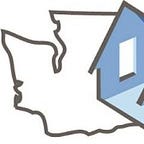Executing a Successful 1031 Exchange
Brian Platt | Paragon Real Estate Advisors
The most frequent conversation that I have with clients in 2018 is the potential of participating in a 1031 exchange. The main concern almost always circles around avoiding capital gains tax while also finding a replacement property that meets their goals and objectives. Then there is the concern of time. What if I can’t find a good property within that limited time frame? The thought of a 1031 exchange creates unwanted stress and anxiety.
First, let’s not forget the benefits of why a 1031 exchange is a viable option.
Avoiding capital gains tax
Increasing cash flow / income
Reducing the burden of property management
Leveraging the equity from your current investment
Increasing purchasing power
Reducing / increasing investment holdings
Diversifying holdings
Estate planning — estate doesn’t pay deferred capital gains tax
Now to the hard part. How do you structure your timelines correctly so you can find an up leg property that works? I encourage all clients to put a plan in place prior to listing their down leg property. First, prioritize the reasons you want to participate in a 1031 exchange. Is it increasing income? Is it deferring Capital Gains tax or is it leveraging your current equity? Based on these answers, you can then figure out your replacement property criteria. Start working with your broker to identify the type of replacement opportunities you are looking for.
While most 1031 exchange clients would like to have a property identified prior to listing their property, the reality is that this does not occur in most exchanges. In a competitive market place, sellers of the “up leg” property are not interested in accepting an offer contingent on an buyer’s “down leg” sale. My recommendation is to build in thirty (30) day extensions to your down leg Purchase and Sale Agreement. Instead of having only the escrow time plus 45 days to find an ideal replacement property, you have now increased that time to potentially 6 to 9 months. Leaving ample time to find the best possible property for your situation. Once you identify three properties within those 45 days of closing the “down leg”, you then have an additional 135 days to close on one of those three properties.
Adding in closing extensions makes all the difference in a successful, stress free 1031 exchange. Please consult with your tax and legal advisor prior to moving forward with a 1031 exchange.
